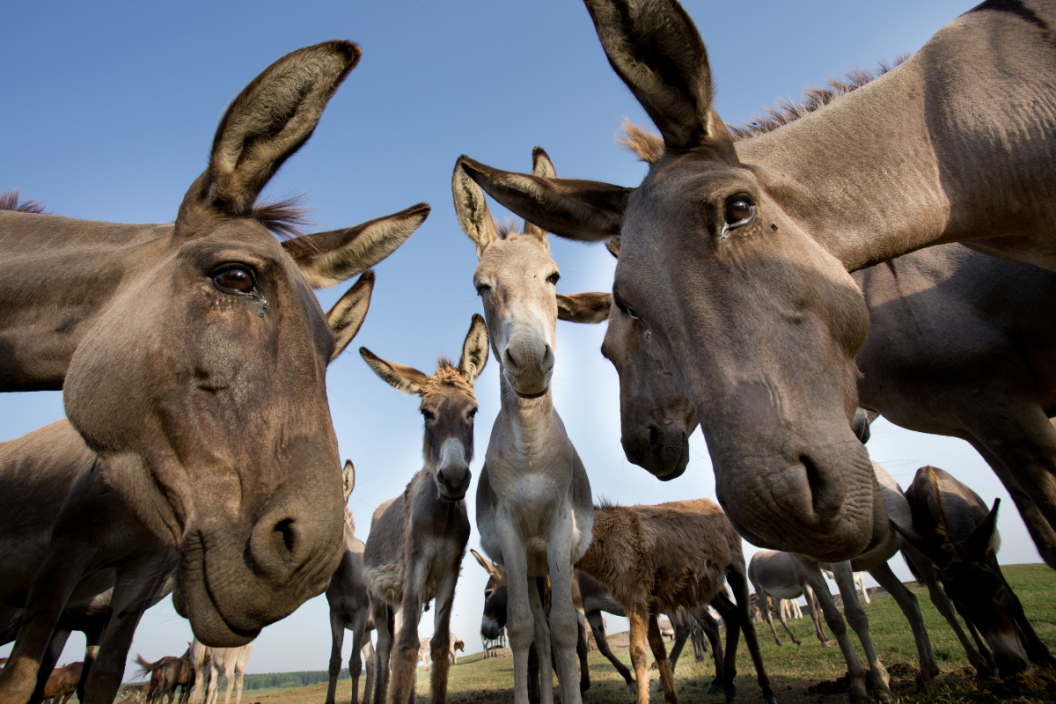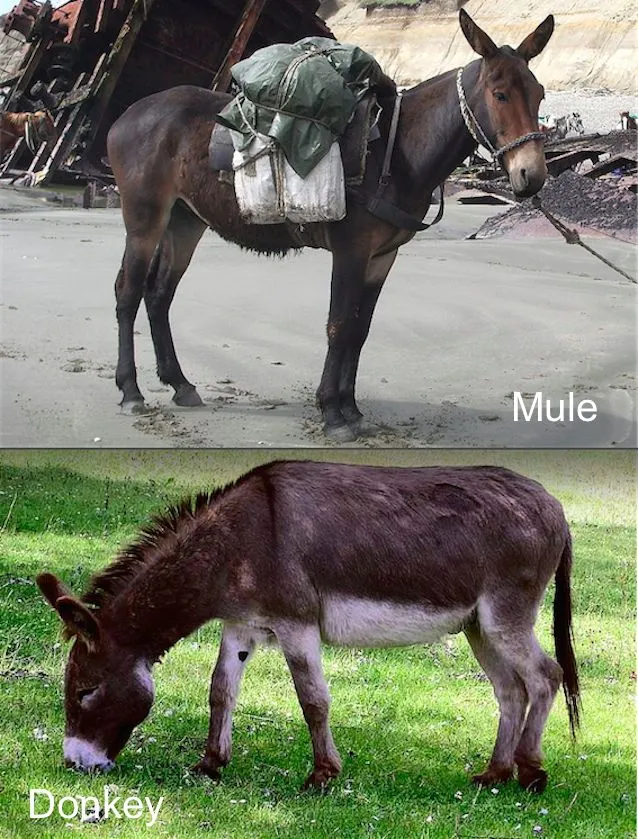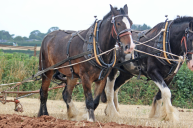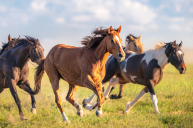Donkeys are well-known for their stubbornness, while mules are the offspring of a male donkey and a female horse, but do you know the difference between these two pack animals?
Both four-legged. Both horse-like. But neither one a horse. At a glance, donkeys and mules look similar, and to the untrained eye, it can be difficult to tell them apart. Even though they are separate species, the two species are also closely related, which makes things even more complicated.
So, what, exactly is the difference between a donkey vs. mule? When you understand the nuances that separate the species, you'll see the differences between these animals and be better able to tell them apart. Here's a quick primer.
Donkey vs. Mule Backgrounds
A donkey (or burro in Spanish), although part of the horse family (Equidae), is, in fact, a different species from the horse (Equus africanus asinus). Donkeys are descended from the African wild ass. They were likely first bred around 5,000 years ago in Egypt or Mesopotamia.
A mule, on the other hand, is a hybrid animal. Mule foals are the offspring of female horses and male donkeys (a "jack" — hence the word "jackass"). A male horse and a female donkey (a "jenny" or "jennet") produce a "hinny." A hinny is just slightly smaller than a mule but otherwise similar.
Understanding Genetics
Genetics is the true foundation for the difference between donkeys and mules. Genetically speaking, donkeys have 62 chromosomes and can reproduce normally. Mules and hinnies have 63 chromosomes. It is because of this mismatch that they are usually sterile.
Having only 63 chromosomes, mules cannot produce haploid cells (cells with half the number of chromosomes), which are required for sexual reproduction. No male mules have been known to produce offspring. However, there are a few rare cases documenting reproductively viable female mules.
Physical Similarities and Differences
Physically, mules share more physical characteristics with horses than donkeys do, including coat consistency, body shape, body size, ear shape, tail, and teeth. Mules come in all sizes, from miniature to draft, but are generally larger than donkeys (despite having a donkey father), and often considerably so. Their body weight makes them better pack mules.
Aside from being smaller than mules, donkeys are identifiable by their endearingly long ears. Donkeys usually have a dorsal stripe that runs along the back, a dark stripe across the shoulders, a short mane, short thick head, and a tail that looks more like a cow's than a horse's. Most donkeys also lack true withers.
Vocalizations are another good way to distinguish donkeys from mules. A donkey makes the oh-so-familiar hee-haw sound. A mule's vocalizations are somewhere between the hee-haw and a horse's whinny. A mule's call usually starts as a whinny and ends as a hee-haw.
Fun fact: the donkeys' stubbornness is attributed to the fact that they have a stronger sense of self-preservation than horses.
When cared for properly, donkeys can have a lifespan of 30-50 years, although this number decreases significantly when donkeys are used for hard work. Mules can have a lifespan of 30-40 years with proper care.
These are some of the major differences between donkeys and mules, but they're by no means the only ones. Interested in learning more about what makes each of these equines unique? Check out the American Donkey and Mule Society's resources.
Do you know the difference between donkeys vs. mules now? Tell us on the Wide Open Pets Facebook page!
This article was originally published December 27, 2019.





